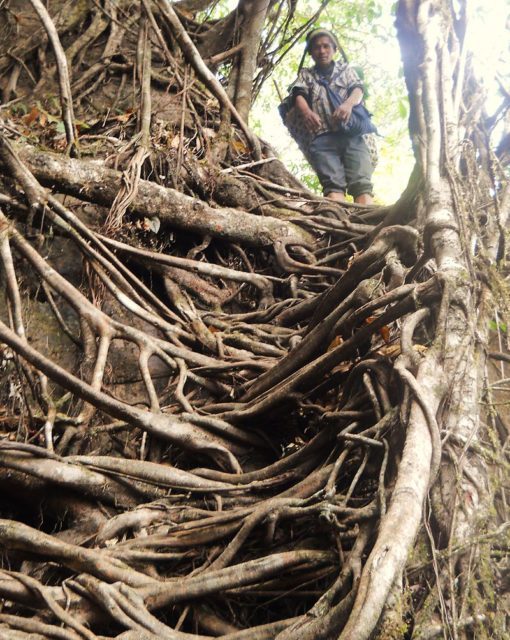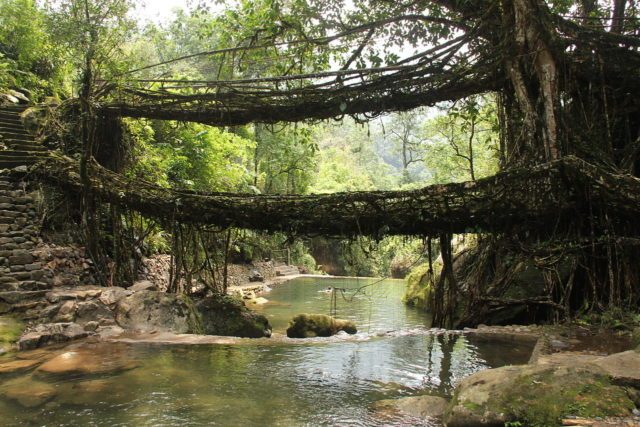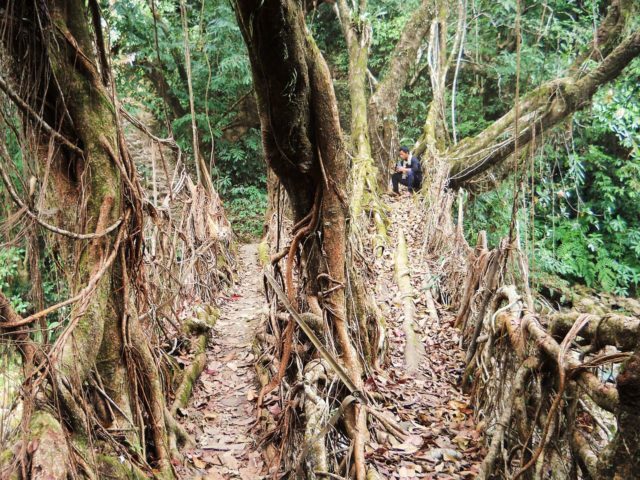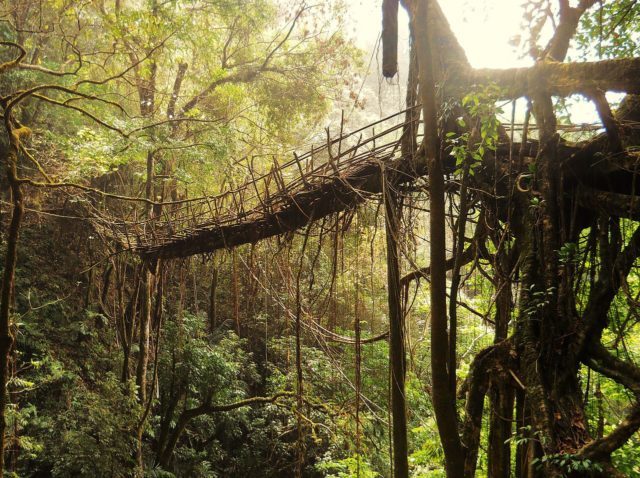Indiana Jones: Suspension bridges in India made from the aerial roots of living banyan fig trees
Beneath the hilly slopes in the southern part of Northeastern India, there is a place called Meghalaya, literally meaning “the abode of clouds;” here the air is so humid and warm that the bridges are not built but grown.
The southern Kasi and Jaintia hills are one of the most humid and warmest places on earth, so, it’s not a surprise that vegetation is going “places,” allowing the indigenous tribe peoples Khasi to make brides out of living roots.
The rubber trees or “Ficus elastica” is a large tree in the banyan group of figs, growing to 30–40 metres (98–131 ft) (rarely up to 60 metres or 200 feet) tall, with a stout trunk up to 2 metres (6.6 ft) in diameter. The trunk develops aerial and buttressing roots to anchor it in the soil and help support heavy branches.

The Khasi and War Jaintia peoples of the mountainous terrain along the southern part of the Shillong Plateau grow bridges using betel tree trunks which have been placed across rivers and streams until the figs’ roots attach themselves to the other side. Sticks, stones, and other objects are used to stabilize the growing bridge. It can take up to 15 years to complete a living root bridge.

The local Khasi people do not know when or how the tradition of living root bridges started. The earliest written record of Cherrapunji’s living root bridges is by Lieutenant H Yule, who expressed astonishment about them in the 1844 Journal of the Asiatic Society of Bengal.

At over 50 meters in length, the longest known example of a living root bridge is near the small Khasi town of Pynursla. It can be accessed from either of the villages of Mawkyrnot or Rangthylliang.
There are several examples of double living root bridges, the most famous being the “Double Decker” root bridge of Nongriat Village,

The War Khasis and War Jaintias also make several other kinds of structures out of the aerial roots of rubber trees. These include ladders and platforms. For example, in the village of Kudeng Rim in the West Jaintia Hills, a rubber tree situated next to a football field has been modified so that its branches can serve as “Living Root Bleachers.” Aerial roots of the tree have been interwoven in the spaces between several branches so that platforms have been created from which villages can watch football games.
